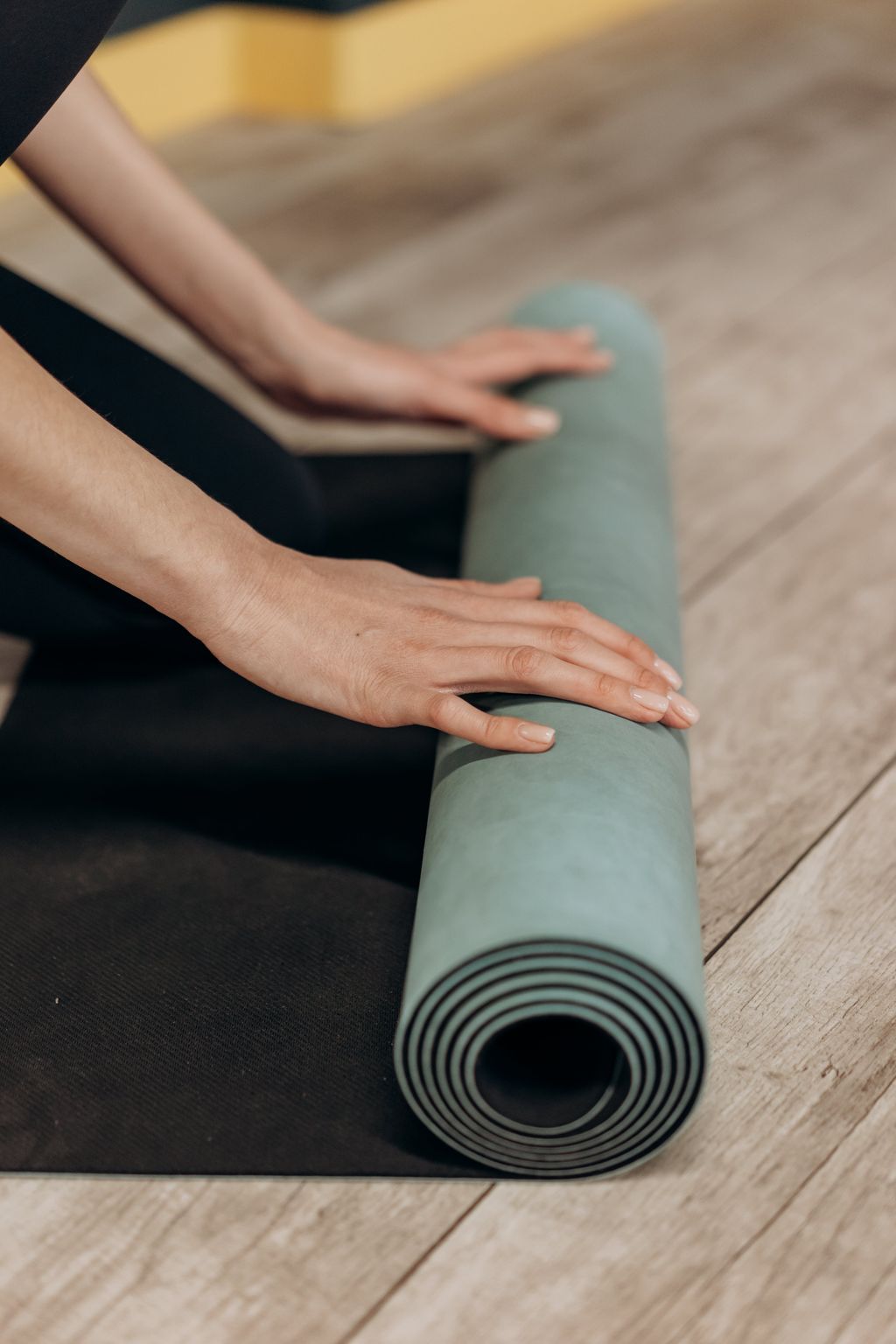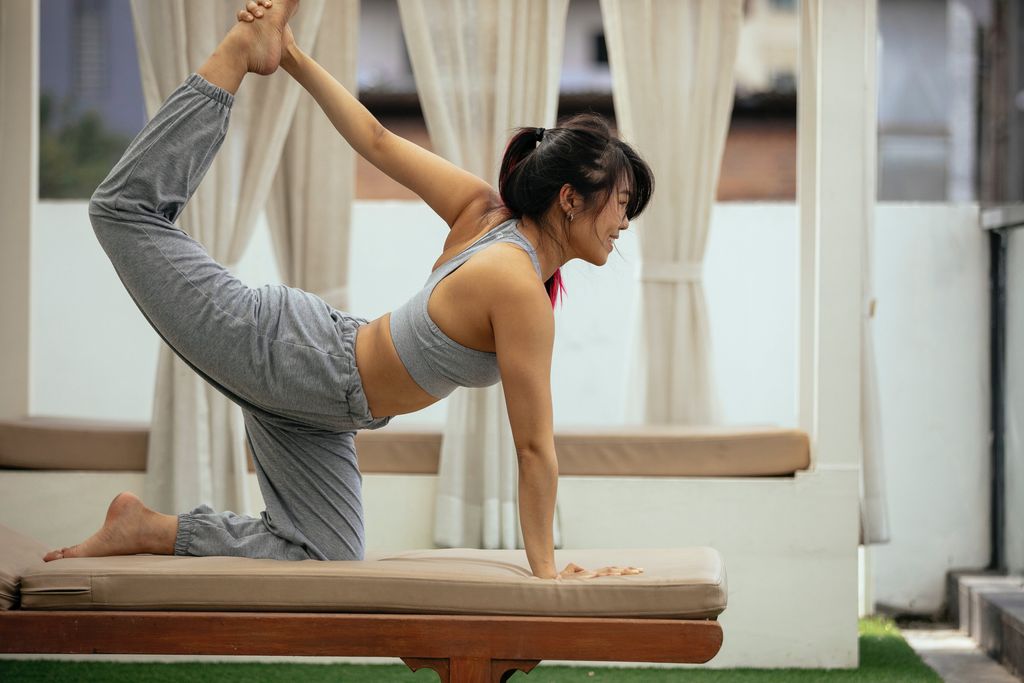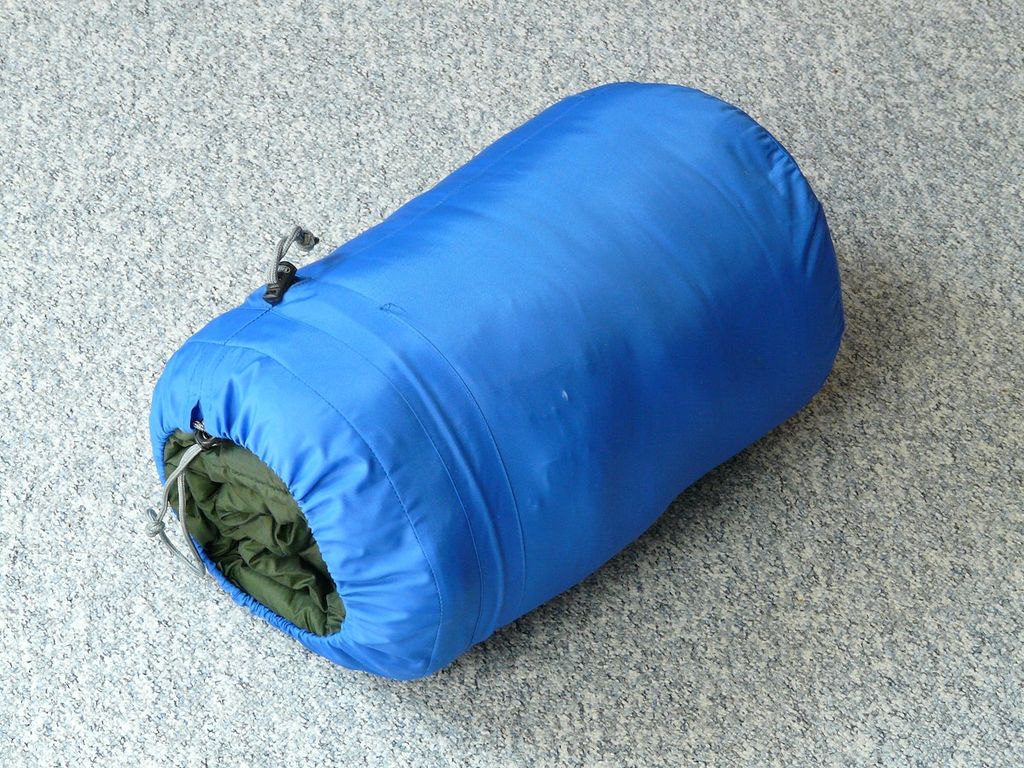
Choosing the Right Size Yoga Mat for Your Practice
Choosing the right size yoga mat is essential for a comfortable and effective practice. The size of your mat can impact your ability to move freely and maintain proper alignment during yoga poses. In this article, we will explore the considerations for choosing the right size yoga mat, factors to consider for different yoga styles, choosing the right size mat for travel, and special considerations for tall yogis.
Key Takeaways
- Understanding your body and practice is important when choosing the right size yoga mat.
- Determining the ideal mat length based on your height and the type of yoga you practice.
- Finding the appropriate mat width to accommodate your body and provide stability.
- Considering the thickness and cushioning of the mat for comfort and support.
- Different yoga styles may require extra space, a narrow mat, extra cushioning, or portability.
Considerations for Choosing the Right Size Yoga Mat
Understanding Your Body and Practice
When choosing the right size yoga mat, it's important to consider your body type and the type of yoga practice you engage in. Comfort is key, as a mat that is too small or too large can hinder your practice. If you are taller or have a larger frame, you may benefit from a longer mat to accommodate your body. On the other hand, if you prefer a more compact practice or have a smaller frame, a shorter mat may be more suitable.
Additionally, the type of yoga you practice can also influence the size of mat you choose. For more dynamic styles like Vinyasa or Power Yoga, a wider mat can provide more stability and space for movement. However, for styles like Ashtanga or Bikram Yoga that involve precise alignment and limited movement, a narrower mat may be preferred.
Consider your body type, practice style, and personal preferences when selecting the right size yoga mat for you.
Determining the Ideal Mat Length
When determining the ideal mat length for your yoga practice, it's important to consider your height and the type of yoga you will be practicing. A mat that is too short can restrict your movements and make it difficult to fully extend your body. On the other hand, a mat that is too long can be cumbersome and may not fit comfortably in your practice space. Finding the right mat length is crucial for a comfortable and effective practice.
Finding the Appropriate Mat Width
When choosing the width of your yoga mat, it's important to consider your personal comfort and the type of yoga you practice. A wider mat can provide more stability and space for certain poses, while a narrower mat may be more suitable for styles that require closer alignment. Additionally, the width of your mat can also depend on your body size and shape. It's recommended to try out different widths to find the one that feels most comfortable and supportive for your practice.
Considering Thickness and Cushioning
When choosing a yoga mat, the thickness and cushioning are important factors to consider. Thickness refers to the depth of the mat, which can provide extra support and comfort for your joints. A thicker mat is especially beneficial if you have sensitive knees or wrists. On the other hand, a thinner mat allows for better stability and balance during standing poses. Cushioning refers to the softness or firmness of the mat. A mat with more cushioning can provide additional comfort, especially if you prefer a gentle practice or have any existing injuries. However, a firmer mat may be preferred for more vigorous styles of yoga that require stability and a solid foundation. It's important to find the right balance of thickness and cushioning that suits your individual needs and preferences.
Here are some key points to consider when it comes to thickness and cushioning:
- Thicker mats (around 6mm) are ideal for those who need extra joint support.
- Thinner mats (around 3mm) are better for stability and balance.
- Mats with more cushioning are suitable for gentle practices and injuries.
- Firmer mats are preferred for vigorous styles of yoga.
Remember, finding the right thickness and cushioning for your yoga mat can greatly enhance your practice and overall comfort.
Factors to Consider for Different Yoga Styles
Yoga Styles that Require Extra Space
Some yoga styles require more space to accommodate the movements and poses involved. These styles often involve dynamic and flowing sequences that require a larger area to move freely. Vinyasa Yoga, for example, is a style that focuses on linking breath with movement and often includes sequences of flowing poses. Practicing Vinyasa Yoga on a mat with extra space allows for smoother transitions between poses and a more comfortable practice.
In addition to Vinyasa Yoga, other styles that benefit from extra space include Power Yoga and Ashtanga Yoga. These styles are known for their vigorous and physically demanding sequences, which require ample room to move and perform the poses correctly. Having a larger mat ensures that you have enough space to fully extend your limbs and move without restrictions.
If you practice any of these styles, it is recommended to choose a mat that is longer and wider than the standard size to accommodate the extra space needed for your practice.
Yoga Styles that Benefit from a Narrow Mat
For certain yoga styles, a narrow mat can provide several advantages. Hot yoga, for example, often involves dynamic movements and poses that require a strong grip. A narrower mat allows practitioners to maintain better stability and balance during these intense sessions. Additionally, Ashtanga yoga practitioners, who often perform a series of flowing sequences, can benefit from a narrow mat as it allows for smoother transitions between poses. It is important to note that while a narrow mat may be beneficial for these styles, it may not be suitable for all practitioners. It is always recommended to consider your own body type and practice preferences when choosing a yoga mat.
Yoga Styles that Need Extra Cushioning
Some yoga styles require extra cushioning to provide support and comfort during poses. These styles often involve more intense movements and put additional pressure on the joints. If you practice these styles, it is important to choose a yoga mat that offers adequate cushioning to protect your joints and prevent discomfort. Here are some options to consider:
Yoga Styles that Require Portability
Yoga Styles that Require Portability
When it comes to yoga styles that require portability, it's important to choose a mat that is lightweight and easy to carry. Whether you're traveling to a yoga retreat or simply practicing on the go, having a portable mat can make a big difference. Here are some factors to consider:
- Weight: Look for a mat that is lightweight and easy to carry.
- Size: Opt for a mat that is compact and can easily fit in your travel bag.
- Durability: Choose a mat that is made from durable materials to withstand frequent use and travel.
Remember, having a portable yoga mat allows you to continue your practice wherever you go, ensuring that you never miss a session.
Choosing the Right Size Mat for Travel
Compact and Lightweight Options
When it comes to choosing a yoga mat for travel, compactness and lightweight are key factors to consider. A travel mat should be easy to pack and carry, without adding too much weight to your luggage. There are several options available that are specifically designed to be compact and lightweight, making them perfect for yogis on the go.
Foldable and Rollable Mats
Foldable and rollable mats are a convenient option for yogis on the go. These mats are designed to be easily folded or rolled up, making them compact and portable. They are perfect for travel or for yogis who prefer to practice outside of a studio. One popular option is the Stakt Mat, which is a foldable yoga mat that doubles as a block for added versatility in your workouts and extra support for whichever way you move.
Considerations for Air Travel
When it comes to traveling with your yoga mat, there are a few important considerations to keep in mind. First, portability is key. You'll want a mat that is lightweight and easy to carry, as you'll likely be lugging it around airports and train stations. Second, foldable and rollable mats are a great option for travel. These mats can be easily packed into a suitcase or backpack, saving you space and making transportation a breeze. Finally, it's important to consider the size restrictions imposed by airlines. Some airlines have specific dimensions for carry-on items, so be sure to check the requirements before choosing a mat for air travel.
Choosing a Mat Bag for Travel
When it comes to traveling with your yoga mat, having a reliable mat bag is essential. Not only does it protect your mat from dirt and damage, but it also makes it easier to carry. There are several factors to consider when choosing a mat bag for travel:
Special Considerations for Tall Yogis
Finding Extra Long Yoga Mats
Finding the right size yoga mat can be a challenge for tall yogis. Extra long yoga mats are designed to accommodate taller individuals and provide enough space for full-body movements. These mats are typically longer than the standard size mats, measuring around 84 inches in length. They offer the necessary length to comfortably perform yoga poses without feeling restricted.
When choosing an extra long yoga mat, it's important to consider the width as well. A wider mat can provide more stability and prevent slipping during practice. Look for mats that are at least 30 inches wide to ensure sufficient space for your hands and feet.
In addition to the length and width, consider the thickness and cushioning of the mat. Taller yogis may benefit from a thicker mat to provide extra support and cushioning for their joints. Look for mats that are around 1/4 inch thick to provide optimal comfort.
Overall, finding the right size yoga mat is essential for tall yogis to have a comfortable and enjoyable practice.
Benefits of Longer Mats for Tall Yogis
Tall yogis can greatly benefit from using longer yoga mats. Longer mats provide more space for tall individuals to fully stretch out their bodies and perform poses without feeling restricted. This extra length allows for better alignment and prevents the risk of slipping off the mat during practice. Additionally, longer mats offer a comfortable surface for tall yogis to rest their entire body, including their head and feet, without feeling cramped.
Avoiding Slippage with Longer Mats
When using a longer yoga mat, it's important to take precautions to avoid slippage during your practice. Here are some tips to help you maintain stability and prevent any accidents:
- Ensure that the mat is placed on a flat and non-slip surface.
- Use a yoga towel or grip-enhancing mat to provide extra traction.
- Engage your core and distribute your weight evenly to maintain balance.
- Avoid excessive sweating by using a towel or practicing in a well-ventilated area.
Remember, a secure and stable foundation is essential for a safe and effective yoga practice.
Choosing the Right Width for Tall Yogis
When choosing a yoga mat for tall yogis, it's important to consider the width as well. A wider mat can provide more stability and space for taller individuals to comfortably practice their poses. Balance is key, so look for a mat that is wide enough to accommodate your body without being too wide that it becomes difficult to maintain proper alignment. Here are a few tips to help you choose the right width for your yoga mat:
- Measure your shoulders: Take a moment to measure the width of your shoulders. This will give you an idea of how much space you need on the mat.
- Test it out: If possible, try out different mat widths before making a purchase. This will allow you to find the width that feels most comfortable for your body.
- Consider your practice: Think about the type of yoga you practice and the poses you typically do. Some poses may require more space, so choose a mat width that can accommodate those movements.
Remember, finding the right width for your yoga mat is just as important as finding the right length. Take your time to find a mat that suits your body and practice needs.
Special Considerations for Tall Yogis
Conclusion
In conclusion, choosing the right size yoga mat is essential for a comfortable and effective practice. Whether you prefer a standard size mat or a larger one for extra space, it is important to consider your body size, the type of yoga you practice, and your personal preferences. Comfort and stability are key factors to consider when selecting a yoga mat size. Remember to also consider the portability and storage options of the mat. With the right size mat, you can enhance your yoga experience and fully enjoy the benefits of your practice.
Frequently Asked Questions
What size yoga mat should I choose?
The size of the yoga mat you should choose depends on your body size and the type of yoga practice you do. It is recommended to choose a mat that is long enough to comfortably fit your body and wide enough to provide stability during your practice.
How do I determine the ideal mat length for my body?
To determine the ideal mat length for your body, lie down on the mat and make sure your entire body fits comfortably on the mat without hanging off the edges. A mat that is slightly longer than your height is usually a good choice.
What is the appropriate mat width for different body types?
The appropriate mat width for different body types varies. Generally, a standard mat width of 24 inches is suitable for most people. However, if you have broader shoulders or prefer more space, you may opt for a wider mat, typically around 26 inches.
Should I consider the thickness and cushioning of the mat?
Yes, the thickness and cushioning of the mat are important factors to consider. Thicker mats provide more cushioning and support for sensitive joints, while thinner mats offer better stability and connection to the ground. Choose a thickness that suits your comfort level and the type of practice you do.
Can I use a travel mat for regular practice?
While travel mats are designed to be lightweight and portable, they may not provide the same level of comfort and support as regular mats. If you travel frequently and need a mat for on-the-go practice, a travel mat can be a convenient option. However, for regular practice, it is recommended to use a standard-sized mat.
How do I choose the right size mat for air travel?
When choosing a mat for air travel, consider the weight and size restrictions imposed by airlines. Look for compact and lightweight options that can easily fit in your carry-on luggage. Some mats are specifically designed for travel and can be folded or rolled up for easy transportation.


